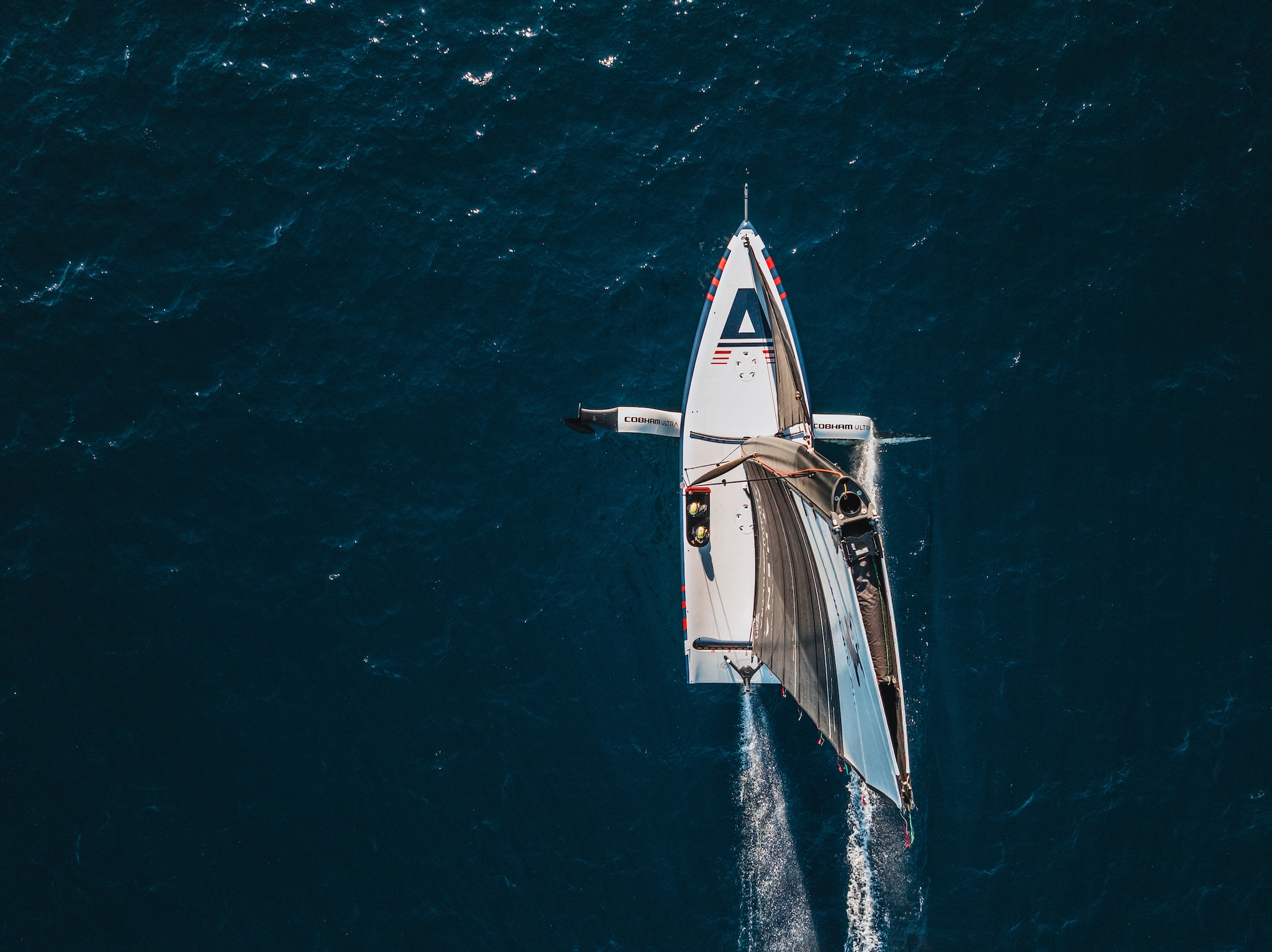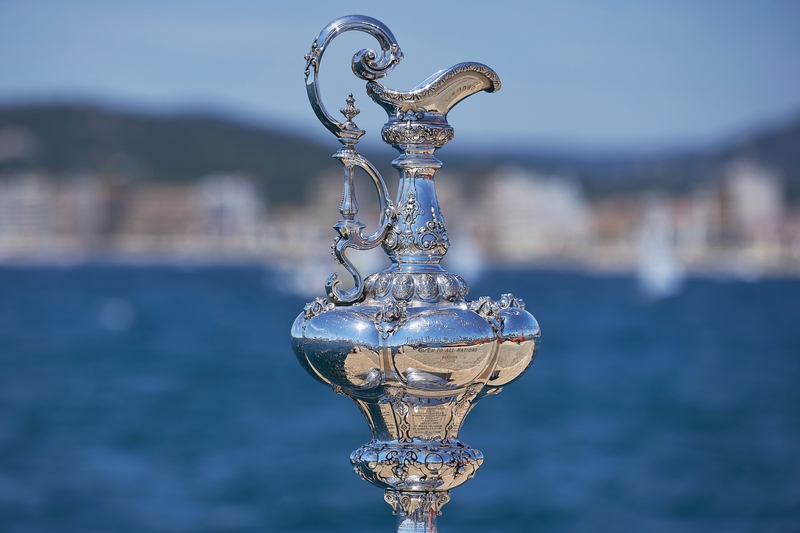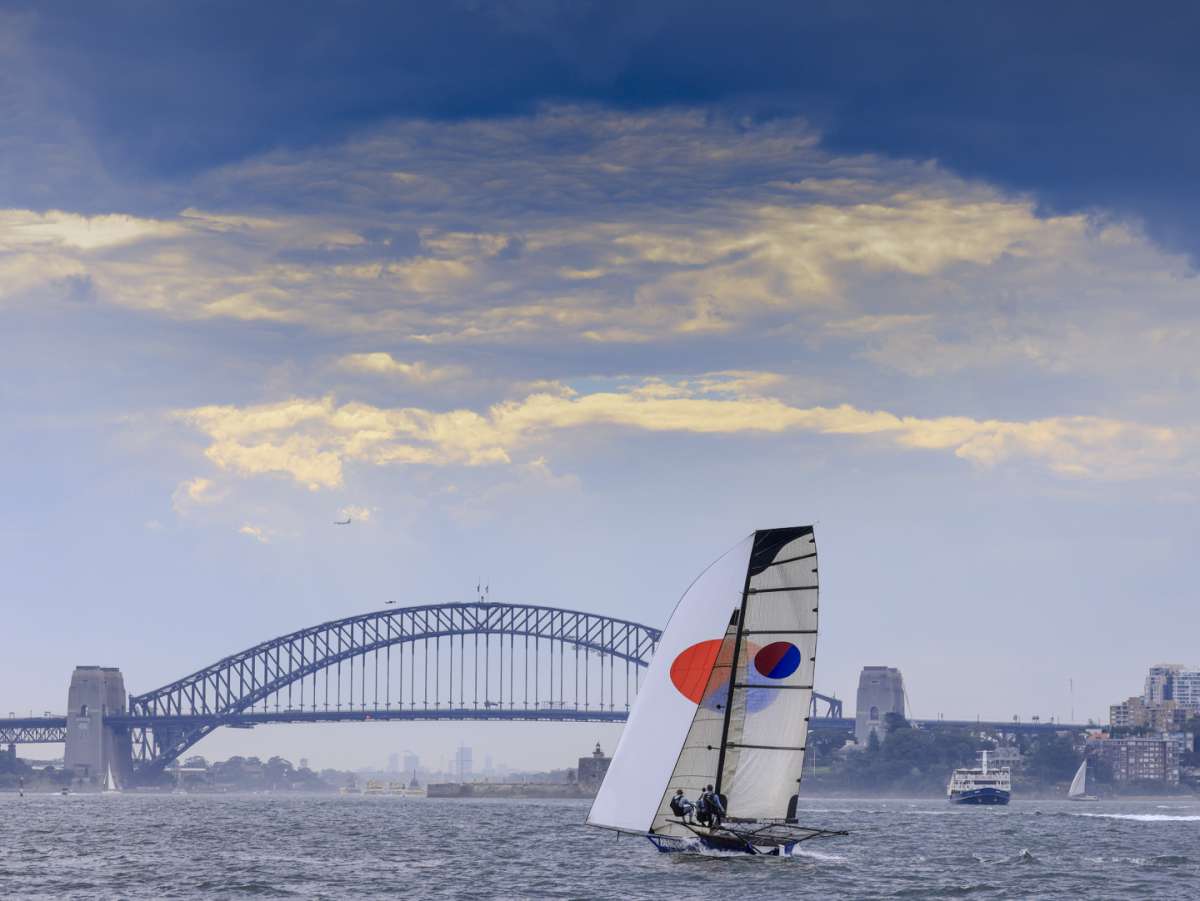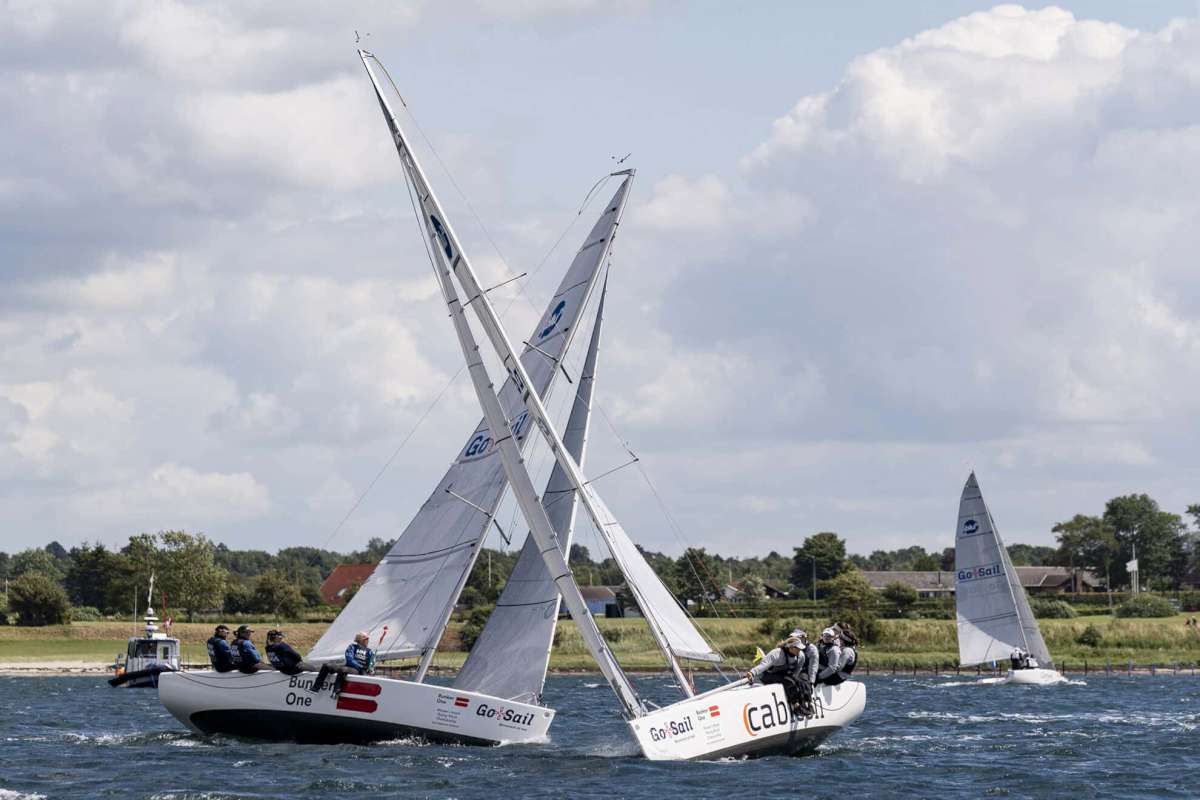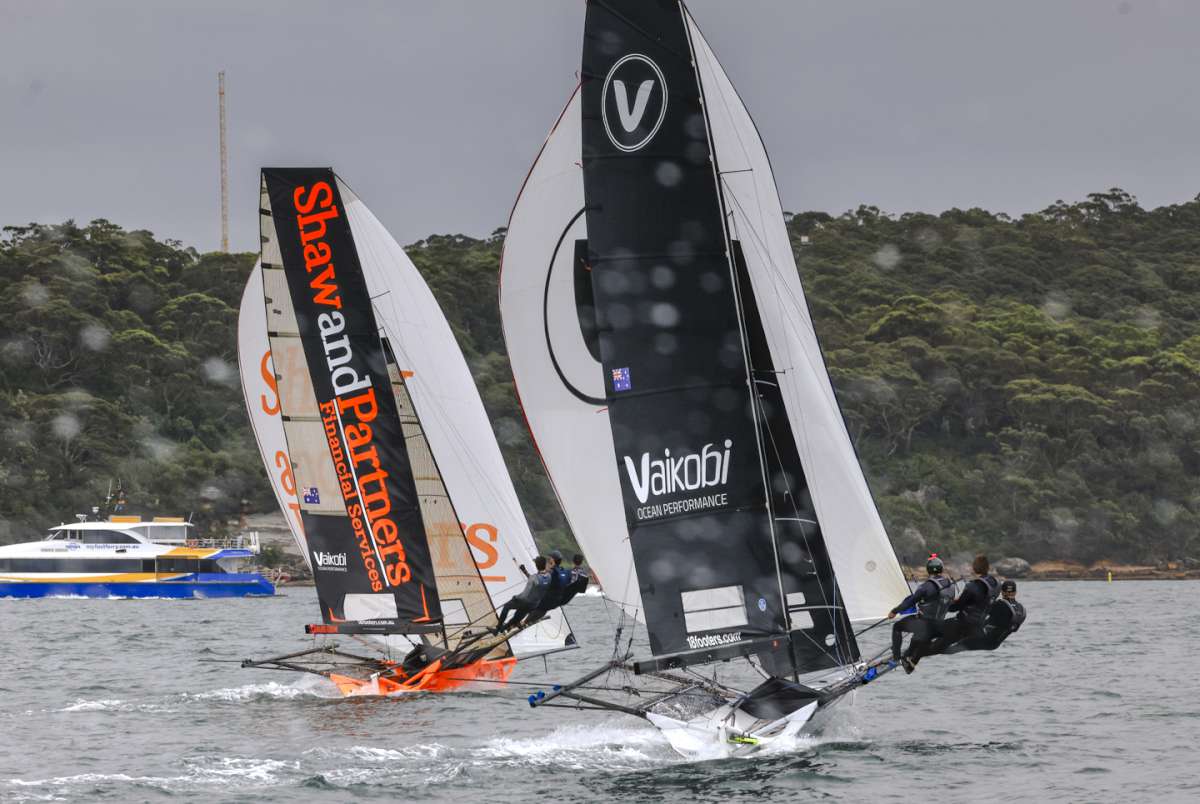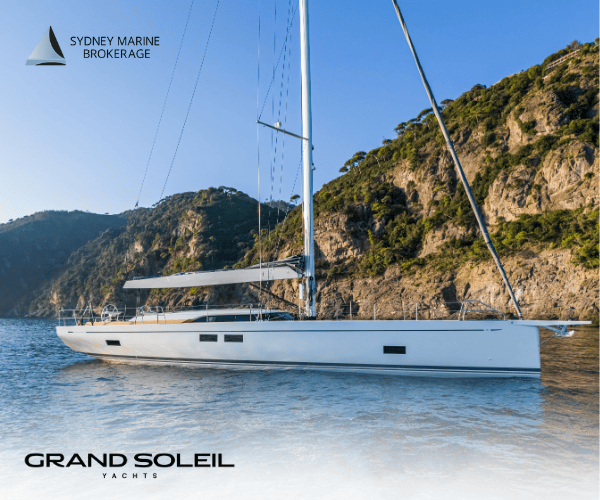Crossing one of the roughest pieces of water in the world without any sailing experience? What would you call it: naive, risky, brave? Would this be another crewing horror story? German adventurer, Gesine and her skipper, John Allen share the tale.
Gesine: Guten tag, mein name ist Gesine und ich bin ein backpacker aus Deutschland.
This is the story of how I backpacked across Bass Strait, the highlight of my eleven months in Australia and one of my biggest adventures ever. Sometimes I still have to pinch myself that this dream came true as I did not have much on my side. All I had was big, big luck.
John: It all started with a conversation on Barrenjoey Light, a Catalina 470, in a Hobart marina. “John, I don’t think I can do Bass Strait without help,” said my co-captain Ruth.
We had sailed down from Sydney and had our daughter, Katherine on board for a fifty hour crossing of Bass Strait, Ruth’s second and third nights at sea.
It turned out to be more eventful than we had hoped. We had to cut away our anchor in Wineglass Bay, that is another story. For novice cruisers we had just loved Tasmania with our friends from Royal Prince Alfred Yacht Club, Sydney and the wonderful hospitality of fellow sailors.
Now, however, we had to return home. So how to get someone to help go back across Bass Strait?
The obvious answer was a 100 kilogram, 180 centimetre man who could really take the load off me. Unfortunately no such person available.
Then we turned to Lyle Borlase, vice commodore cruising at Derwent Sailing Squadron. Lyle and his wife Madelaine had been incredibly helpful. In fact, everyone in Tasmania was.
Lyle sent us three emails from potential candidates, including an experienced couple who would not be available for at least some weeks and one that caught our eye: “My name is Gesine, I am a 24 year old German girl travelling around Australia. Currently I’m staying in Hobart. On my travels, especially on the trip to the Whitsunday Islands, I fell in love with sailing. […] I am wondering if there is any chance to work as a deckhand, crew member or volunteer on a sailing boat […]? I’d love to know and learn more about sailing and I’m willing to work hard. Maybe there is even someone who wants to sail from Hobart to the mainland shortly?”
It could have been a big risk but keenness seemed to emanate from every word.
There was a phone call during which we asked Gesine about her experience and tried to make sure she understood that this was not something to be embarked on lightly.
Gesine later told us she was very nervous and felt that we regarded her as too big a risk but, after some discussion, we rang her back, “come down tomorrow and we will see”.
Gesine: To be honest I did not know much about sailing, to be more precise basically nothing. All I knew was that I wanted to do this trip. At all costs!
There was no other option, I had to get on this boat come hell or high water. No wonder I was incredibly nervous when I met Ruth and John. They did not know it was a special day for me which turned out to become even more special.
John: We learned later that it was Gesine’s 25th birthday. We stressed the ground rules for coming with us. Gesine was made to understand that safety was not something where we would compromise.
We talked about some of the difficulties she might face: seasickness, fatigue. A steep learning curve.
The skipper might at times be Captain Bligh (we had to explain that one). Gesine’s response: “you have tried to scare me off but I would still love to come.”
Ruth and I nodded to each other, “OK, Gesine can you come aboard tomorrow? Oh, and please tell your parents.”
Gesine: Yippie, I was really going to become a deckhand!
Decky Gesine sounded wonderful to my ears. Now I had to and wanted to learn and learn and learn. John gave me an introductory pocket book on sailing, which I immediately started to study. Halyard, mainsheet, reefs, tack, reach, run… mental overload in a foreign language!
But I could not be discouraged and Ruth and John were very patient with me. They showed me every corner of their beautiful yacht and explained how to use the VHF radio. I even had a go myself and was so nervous, although I just called Bogart, another RPAYC yacht lying a few metres away in the marina. Everybody starts somewhere.
Speaking of nervous, I was terribly excited when we left the marina the next day.
Ruth and John had talked me through many safety procedures. Abandon ship for example! But, excuse me, I had only just joined!
The man overboard procedure made staying on board sound very plausible to me. Even more so when we were out on Storm Bay.
It was our first leg from Hobart to Port Arthur and the bay absolutely lived up to its name. Dark clouds, scudding rain, 30 to 40 knots and two metre waves welcomed us. Seriously, who wants to fall off the boat and go for a swim in these conditions? I for sure did not.
Standing in the cockpit and enjoying the wavy rollercoaster ride on Barrenjoey Light, of course clipped on, was one of the most adventurous starts of this journey I could have wished for. I was ready for more and I was going to get more.
First we enjoyed the very pleasant side of sailing: cruising around in our dinghy and having a ‘Captain Cook’ at the gorgeous Endeavour which anchored just 500 metres away from us in Port Arthur; saying hello to playful dolphins every day; being gently pushed up Tasmania’s east coast to Triabunna by a tail wind.
As we went along I slowly started to feel more comfortable at pulling and letting sheets off, learning by doing was the motto. But also learning by making mistakes when I remember my first time at the helm.
We wanted to hoist the sails, my task sounded simple: “steer the boat into the wind.” No worries mate, I thought, but what did I do? I totally over-steered so that John came to take over. Even after some days on the boat I was still an absolute but fascinated beginner.
But the crossing came closer. Only one night was left before we left Triabunna harbour and were off for two days and nights out on Bass Strait, I was keen, or did I just not know what I had got myself in for?
If I had not known, John gave me a very detailed picture of what we would be expecting.
John: We would need to squeeze in between a Saturday 28th February with 25 knot northerlies on the nose and Tuesday late and into Wednesday when it was forecast to be 40 to 50 knot sou’westerlies in Bass Strait.
Gesine: We studied dozens of weather charts: colourful maps with information on wind and swells (it felt like millions).
It was amazing to see how much preparation was necessary for our crossing. In the end we spent one whole afternoon on planning, setting waypoints, noting down coordinates. We had a strategy: when to leave and where to go to avoid the biggest swells and winds.
I realised once more that this was going to become a serious undertaking. Now it was too late to turn back anyway.
The crossing turned out to be an adventure for early birds, the alarm rang at 5am. If I still had been asleep the beautiful sunrise would definitely have woken me.
Then we sailed and sailed and sailed. Saw seals, penguins, dolphins, albatrosses.
The strong southerlies gave way to very light conditions. The sea was calm, the dark blue water was glittering in the sun. We got through the first and windless night and a beautiful second day until, yeah, until the wind, as forecast, changed direction and came up in the late afternoon.
The second night on Bass Strait I will never forget.
Ouch! Another big wave hit us with full power on the nose. The spray and the foam splashed onto our faces. The taste of salt water got on my lips. Bass Strait had really turned it on now. 35 knots on the nose and two metre waves, coming very close together, made the boat rock heavily.
We had pulled the sails down. Apart from the sound of the waves the roar of the engine struggling to keep the boat moving forward was the only sound to be heard.
Ruth, John and I were sitting in the cockpit as the night was descending. Fatigue came over me but sleeping was the last thing on my mind as that would mean to go down below and with my seasickness that did not sound like a good idea at all. So I just kept sitting and sitting.
Thoughts crossed my mind, like “what the hell are you doing here in the middle of Bass Strait?”
Other than 40 dolphins who played with the boat Ruth did not seem to enjoy the moment either.
John: And I had developed a migraine earlier. Five strong pain killers had sorted the pain but now was a time for a full set of faculties and the right response to the conditions.
We knew that we would have to crash into the north easterlies for another six hours. But our speed was down to two to four knots and we were chewing fuel.
Therefore, at 7pm I made the only sensible decision. We put in three reefs and readied the staysail.
Gesine: I do not know what was more nerve-wracking: watching John ride the bouncing deck to ready the sails so that we could hoist them, or riding it myself.
All Ruth and I could do was stand in the cockpit, keeping our fingers crossed and hoping for the best while wave after wave hit the boat. But our captain knew what he was doing and thank god returned safely. Then he hand steered, hour after hour till midnight.
The boat was leaning quite a bit but going much more smoothly through the waves until the wind died and swung around to the west, exactly as forecast. John needed some sleep so it was Ruth’s and my turn.
I had not got any sleep for hours but simply because I could not and did not want to go below. Literally I could sleep with my eyes open but did not go to bed until 2am when John came back. Lying down was a blessing and normally it would take me seconds to fall asleep in that condition but the still rocking boat made it tough.
In the morning it all did not matter anymore because, after I greeted John with the usual “guten morgen Captain”, I saw land. Seriously, land!
I could not help myself but smile instantly.
John: Gabo Island was abeam and we had crossed!
Fifty two hours gone and only six more to Eden. It was great to see Ruth and Gesine’s smiles breaking through their fatigue.
During the trip we had more adventures and many wonderful experiences. For Ruth and I, Gesine was a very special part of why that trip back from Hobart to Sydney was so memorable.
Safety was critical for us. Looking after Gesine was a responsibility that we felt very deeply. Ruth and Gesine bonded on their watches.
We had to start slowly and simply, but Gesine demonstrated that attitude was much more important than skill. We took someone who was very green and helped her grow into a very competent crew member. Fairly petite but nimble and enthusiastic.
The opportunity for Ruth and I to teach Gesine was very rewarding and reinforced our own skills and experience too.
Yes, I did yell once when Gesine was over-zealous untying a mooring line and all its knots. But all part of the learning experience, one that we were very lucky to have.
Ruth had her help across Bass Strait but we gained much more.
Gesine: Stepping out of a washing machine after the spin-drying program, that was what it felt like when we finally arrived in Eden and went ashore. What a relief!
But getting off Barrenjoey Light five days later in a marina near Sydney was the exact opposite. John had to pull me off the boat.
I did not want to as I had had such an amazing time. I am so incredibly grateful for the chance Ruth and John gave me and it made me believe that if you really want to do something you can do it and people will support you.
I learnt so much: doing knots for example and how to hoist a sail; which ropes to pull and of course how to pump up the dinghy, the classic deckhand job. Far more important though: have a go! I definitely want to do more sailing in Germany.
The most important lesson: trust others. Otherwise I would not have met these wonderful two people who cared like a daughter for me.
Ich bin ein flash packer jetzt. Vielen dank to my sailing parents.





